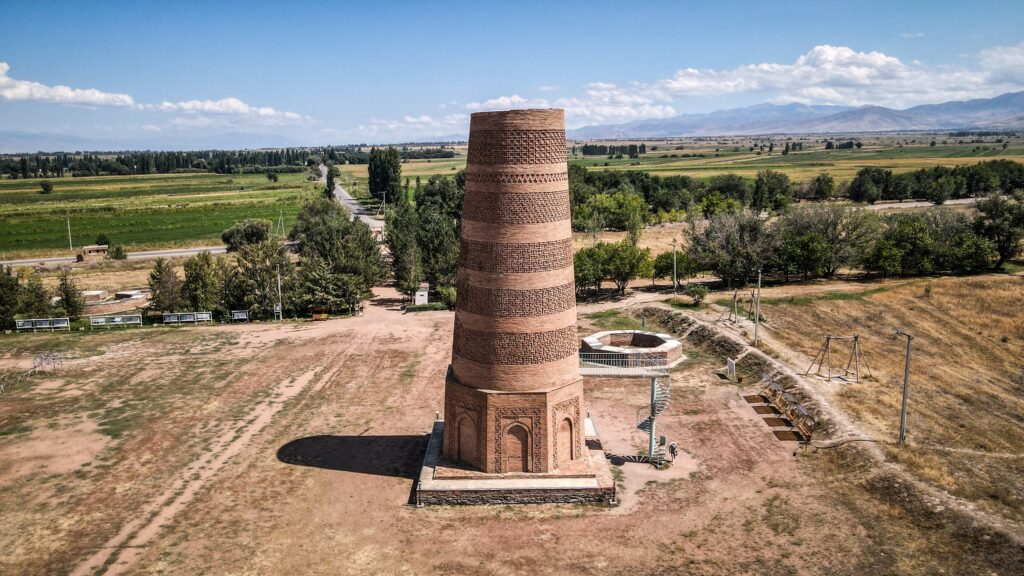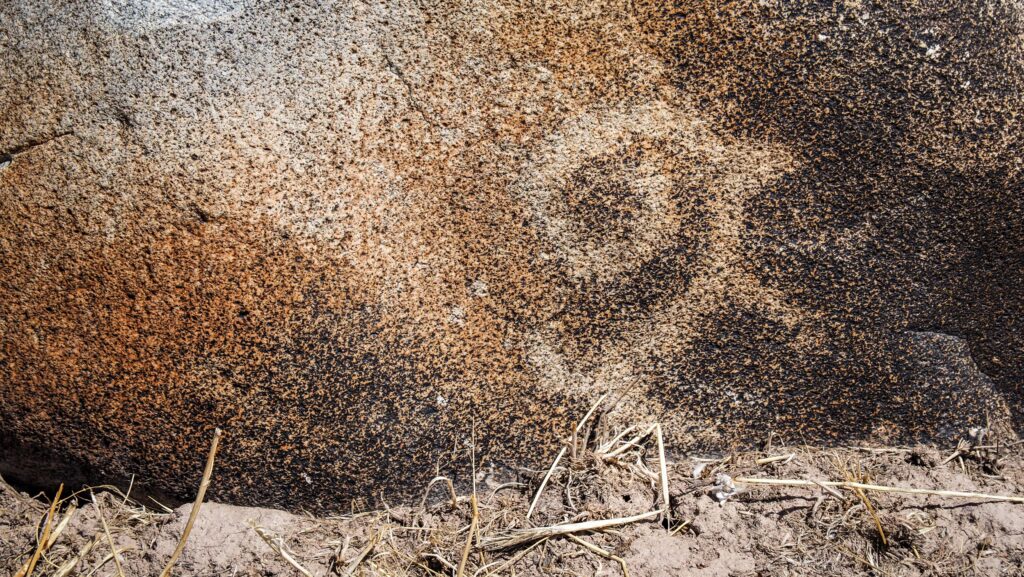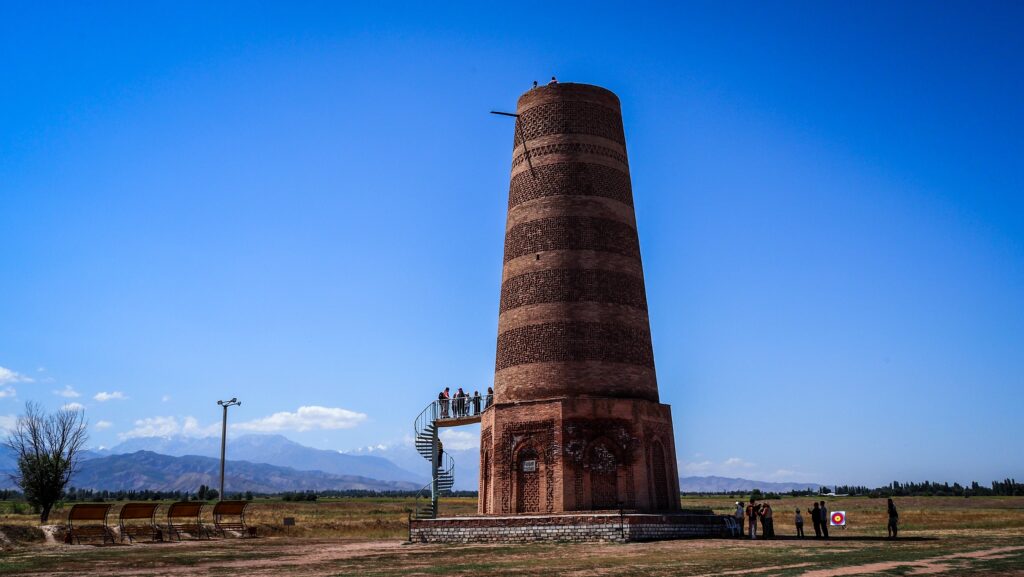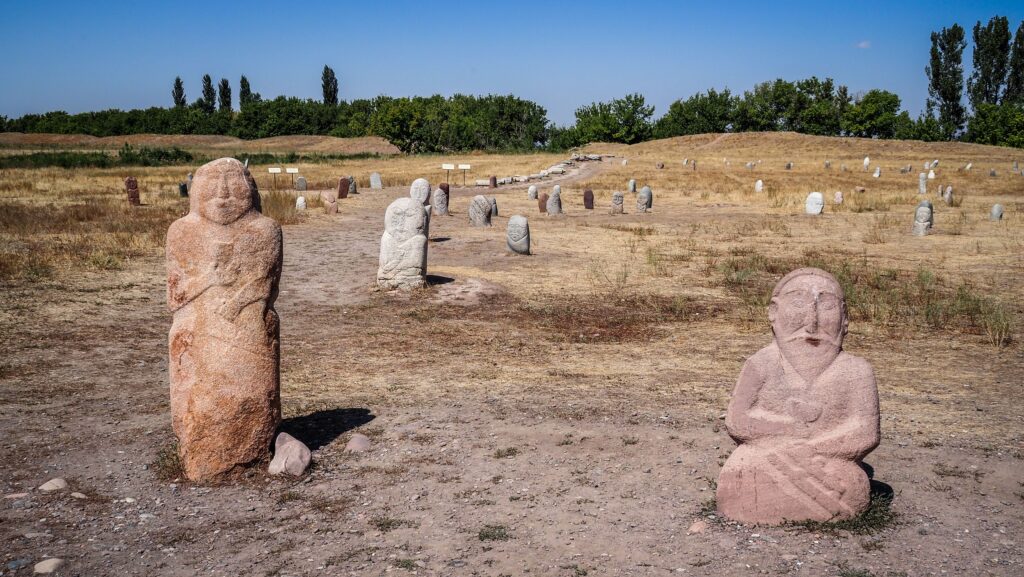The Burana Tower is a large minaret located near the town of Tokmok in northern Kyrgyzstan. It is one of the most significant historical monuments in the country and a key remnant of the medieval Silk Road era.
The tower was built around the 10th–11th century during the time of the Karakhanid Khanate, a dynasty that ruled much of Central Asia. Originally, it is thought to have stood at around 40–45 meters tall, serving both as a minaret for a mosque and as a symbol of the city of Balasagun, the Karakhanid capital.
Like other minarets, it would have been used for the Islamic call to prayer. Beyond its religious role, towers like Burana also functioned as landmarks for travellers and traders moving along the Silk Road.
Earthquakes over the centuries caused significant damage to the structure. By the 15th century, parts of the tower had collapsed, reducing it to about 25 meters, which is its current height. The surrounding city of Balasagun eventually declined and was abandoned, leaving the tower standing in isolation.
In the 20th century, restoration work was carried out to stabilise the structure and prevent further collapse. Today, visitors can climb a steep internal staircase to reach the top and look over the Chüy Valley. Around the tower, there is also a collection of balbals (ancient stone statues) and artefacts from the region.

How to get there?
By Car
Drive east from Bishkek on the A365 highway toward Tokmok. Once in Tokmok, follow the signs to Burana, which is about 12 km south of the town.
By Minibus
Go to the Eastern Bus Station in Bishkek. Take a marshrutka heading to Tokmok or Balakchy / Cholpon Ata (tell the driver to drop you off at the turn off to Tokmok). In Tokmok, hire a taxi to take you to the Burana Tower (I highly recommend using the Yandex App). Ask the driver to wait for you, or you will need to hitchhike back to town, as ordering a taxi from the app may be very difficult at this location.
Tours
Many agencies in Bishkek offer half-day or full-day tours to Burana Tower, often combined with other nearby attractions. Convenient if you want a guide to explain the history.


The best time to visit
Spring (April–June)
The valley is green and full of flowers, making the views from the top of the tower especially beautiful. The weather is mild (around 15–25°C), comfortable for climbing the tower and walking around the site.
Summer (July–August)
Warm to hot (25–35°C). It can feel scorching since the site has very little shade. Still popular because many tourists visit Kyrgyzstan in summer. If you go, it’s best to visit in the morning or late afternoon to avoid the midday heat.
Autumn (September–October)
Another excellent time: mild temperatures and golden landscapes in the Chüy Valley. Fewer tourists compared to summer, so it feels calmer.
Winter (November–March)
Cold (sometimes below 0°C) with snow possible. Very few visitors, so you may have the place almost to yourself. Climbing the tower’s narrow steps can be slippery and difficult in snow or ice.
What are the stone statues near the tower?
Balbals are carved stone figures, often stylised and human-like. They were placed on graves or burial mounds by nomadic Turkic peoples as early as the 6th century. Many represent warriors or ancestors, sometimes holding a cup, weapon, or other symbolic object.
They are believed to honour the dead, especially warriors, and serve as guardians of the spirit world. Some scholars suggest they may also represent enemies defeated in battle, symbolically serving the deceased in the afterlife. Each statue has unique features, reflecting local styles and the person it commemorates.




